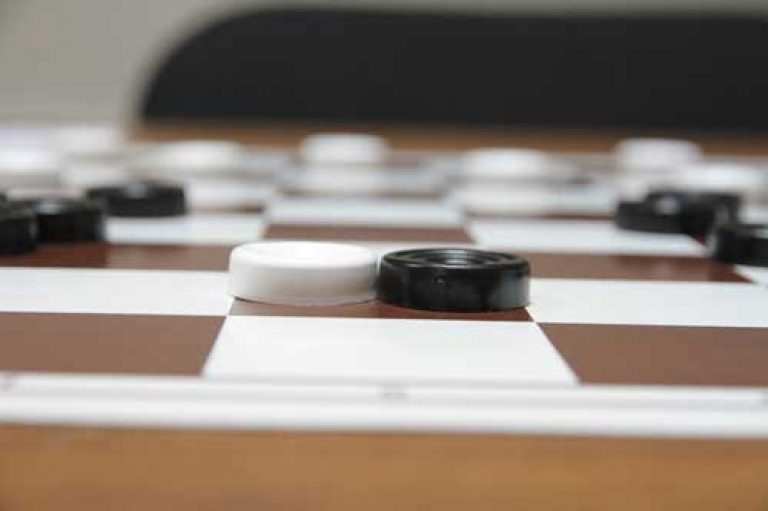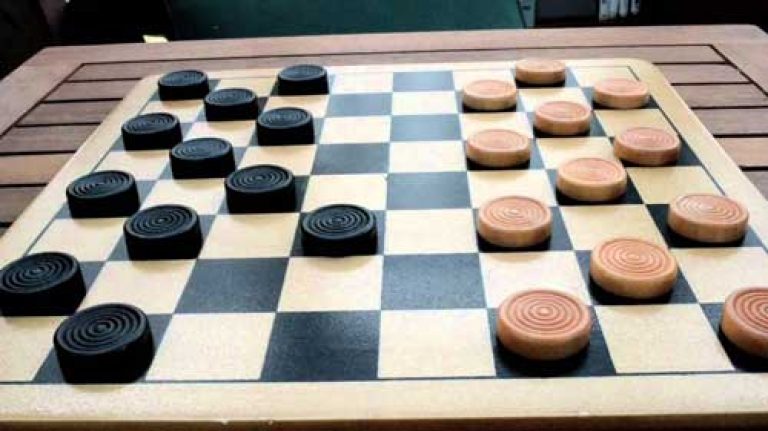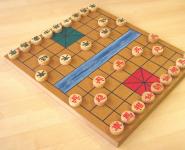How to play checkers: rules for beginners
Checkers is perhaps the second most popular board game in the world, second only to its older brothers, backgammon.
The history of their origin dates back several centuries, and the first games like checkers existed in ancient Egypt in 1600 BC.
Over the course of the subsequent time, checkers gained popularity all over the world - archaeological excavations have proven that flat figurines made of amber or simpler versions made of stone were used for mental entertainment as far back as Kievan Rus.
In the 12th century, they appeared on the territory of France, and two centuries later - in England, where they were actively used not only for recreation, but also for working out the tactics of knightly battles.
Interesting fact! Peter the Great, a well-known reformer and innovator of his time, who from a young age showed interest in developing sciences, paid special attention to checkers. There was even a special room in the palace set aside for the game, in which the emperor liked to spend his free time.
And today it is a board game loved by many, which has become one of the most accessible and popular types of sports.

Checkers sport is developing all over the world:
- Tournaments of various sizes are held annually, from regional competitions to continental world championships.
- Clubs of amateurs - drafts players are formed.
- Schools for beginners are functioning and developing, where real professionals share their experience with young athletes.
If you are fascinated by the magic of the game and you want to not only learn how to walk correctly, but also hone your logical abilities, or dream of teaching your child to spend time away from the computer in an interesting and useful way, we will show you how to play checkers correctly to win.
So, let's analyze the rules of the game in Russian checkers:
- The competition involves two players, each of which has its own set of 12 white or black pieces.
- The game is played on a standard 8 x 8 chessboard, rotated so that there are letters horizontally and numbers vertically.
- Checkers are placed only on black cells in such a way as to fill three horizontal rows from their side. Thus, there are two free lanes between the opponent's pieces.
- The steps are performed one by one, with the player with the white pieces making the first move.
- Walking is allowed only on the black squares of the board.
- If there is an empty black cell behind the checker, then it must be "killed" - the first player transfers his piece to a free square, and the opponent's piece is removed from the board.
- In one move, as many pieces as can be crossed are beaten, without limitation in number.
- There is a zafuk rule, according to which a player who did not notice the opportunity to “eat” an opponent’s checker must return back to his cell and repeat the move correctly. This provision replaced the outdated fuka rule, in which a piece that made an incorrect step was considered “killed” and removed from the table, but the move was not repeated.
- If, as a result of the game, a simple checker reaches the last horizontal line on the opponent’s side, it turns upside down and gets the name “king” with increased opportunities for capturing the opponent’s pieces. The king can move along the entire length of the diagonal row, “eating” all enemy chips in its path.
- Both a simple checker and a king can "hit" pieces in any direction - back and forth. But, unlike how the king moves, a simple checker cannot make a move back if it is not shocked.
- One of the tactics of the game is to "surrender" one or more of your own pieces for the opportunity to make a move or for other advantages in the game.
- The game ends with the victory of one of the players if he "beat" all the opponent's checkers, or a draw if the pieces are arranged on the board in such a way that further moves are impossible on both sides.
- If there is not a single simple piece left on the board, but only kings, it is allowed to make 15 moves, after which either the winner is determined or a draw is recognized.
Note! In other varieties of the game, there may be some differences in the rules. So, for example, Canadian checkers are played on a 12×12 board, while in the English version, the first move is made by “blacks”.
Time control

In order to indicate the time frame, it is customary to use several classifications of the duration of the game in international competitions:
- Classical checkers - 1 hour per game.
- Rapid (quick play) - 15 minutes per game.
- Blitz (lightning game) - 3 minutes per game.
If necessary, the referee may add a certain amount of time for each move made until the end of the game.
Note! Like a chess tournament, players also keep a notation, that is, they make a record of their maneuvers, in which they indicate the characteristic of a move or a tactic for short.
Glossary of terms
As in any sports, checkers has its own terminology, with the help of which experienced players indicate their action, the period of the game or the position of the pieces on the board.

For beginners, it will not be superfluous to understand the special expressions used by checkers players in order to learn all the subtleties and secrets of this intellectual sport.
| Term | Explanation |
| Attack | The attack of one of the parties |
| Blockade | A situation in which it is impossible to move a checker in any direction |
| Majority (majority rule) | A rule adopted in some varieties of the game, in which the player is obliged to choose from any possible options for his move exactly the one in which his checker hits the largest number of opponent's pieces |
| Fork | A position in which one king remains on the board against two simple checkers of the opponent |
| Gambit | Sacrifice your piece at the very beginning of the game to gain initiative in the game |
| King | The strongest piece on the board, has the ability to attack in any direction, and take any number of opponent's checkers |
| Victim | Intentionally losing one's piece in order to gain further benefits |
| Trap | A position in which opponents try to draw each other in to establish a winning position |
| Draw | The result of the game, in which neither the winner nor the loser is determined |
| Giveaways (reverse checkers) | A variation of the game, the end result of which is not the capture of all the opponent's pieces, but the surrender of one's own |
| Position | Arrangement of pieces on the board |
| hack | Remove the opponent's checker, which is under attack, and put your own in its place |
| Quiet running | A simple checker move, without capturing an opponent's piece |
| shock stroke | A move in which one or more opponent's pieces are "eaten up" |
| Wing | One side of the checkerboard |
| Zugzwang | A position in which any move only leads to a deterioration of one's own position |
| Endgame | The final phase of the game |
In our article, we tried to briefly and easily talk about the most common rules used to play checkers. But only those who take lessons from an experienced checkers player who will gradually reveal all levels of skill can play really well.
Checkers is a great way for early childhood development. You can play them from a very young age to old age. A set of pieces and a board are easy to get at any sporting goods store or educational games department.
The cost of such a product is available to everyone, and the benefits that this intellectual game brings, and the pleasure of winning, can keep mental abilities in good shape for a long time and add positive to our everyday life.
Useful video
- Similar posts


